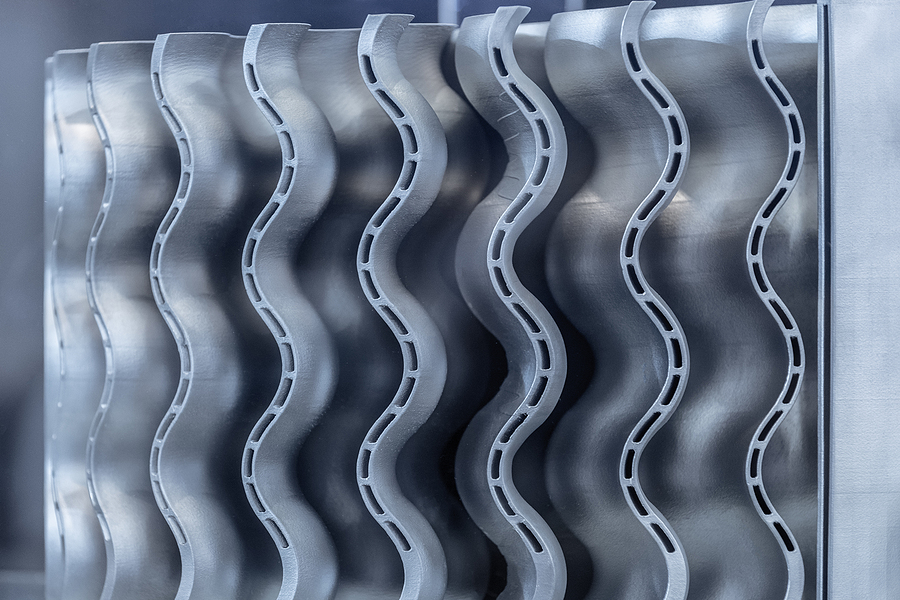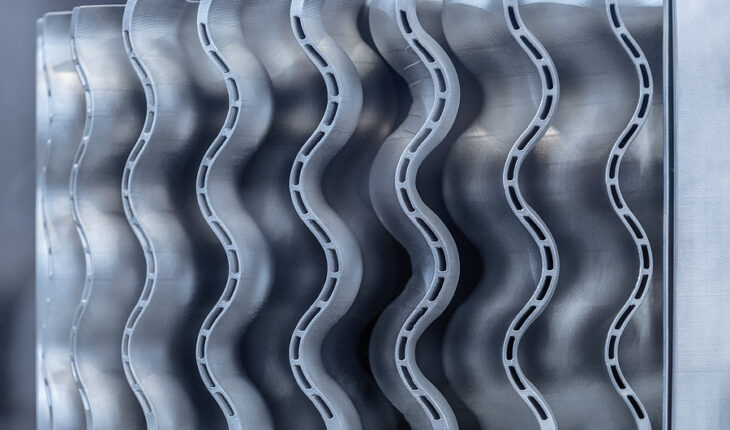What makes additive manufacturing and aerospace such a perfect fit?

By most estimates, the aerospace industry accounts for roughly one quarter of the additive manufacturing (AM) market. That makes it the largest or second largest segment (depending on whom you ask), rivaled only by medical devices. Compared with other industries, such as automotive or consumer goods, it’s not even close.
So, what makes AM so appealing in aerospace?
If you’re familiar with 3D printing technology and its capabilities, especially compared to more conventional – primarily subtractive – manufacturing techniques, the answer may seem obvious. However, for many engineers, the idea of bringing a relatively novel manufacturing approach to an industry that’s so heavily constrained by quality standards and regulations may seem deeply counter-intuitive.
Here are 10 benefits of 3D printing components for aerospace applications divided into three categories: design, production, and product lifecycle.
Design benefits of 3D printing in aerospace
#1 – Faster prototyping
The one thing practically every engineer knows about 3D printing is that it’s great for prototyping. Prior to the proliferation of low-cost desktop 3D printers, creating prototypes for products was both expensive and time-consuming, especially in an industry like aerospace where components often need to be both precise and highly complex. Nowadays, designers can produce multiple prototypes in less than a day for a fraction of what those models would have cost in the past.
#2 – Greater geometric complexity
It’s been said that, “Complexity comes for free,” in 3D printing, owing to the fact that internal features, enclosed cavities and other geometries that would be difficult or impossible to produce via traditional subtractive methods are easily created in additive processes. While this is a slight oversimplification, it’s near enough to the truth to explain why AM and aerospace go so well together. Turbine blades, conformal cooling channels and other organic shapes are highly sought after in aerospace applications and the availability of 3D printing makes those much more accessible to designers than they used to be.
#3 – Lightweighting
Alongside the ability to create more complex geometries at no (or at least minimal) additional cost, 3D printing enables aerospace engineers to take full advantage of topology optimization, reducing the weight of components by removing material without compromising their overall strength. The net result is lighter parts, which means lower fuel costs. For an industry where lower fuel consumption makes an enormous difference in operating costs, this makes additive manufacturing a very worthwhile investment in aerospace applications.
#4 – Assembly consolidation
Another benefit of additive manufacturing that’s frequently touted is the ability to consolidate assemblies, combining multiple parts into one. This is enabled by 3D printing’s ability to create complex geometries and, in addition to providing further options for lightweighting, it can also simplify the manufacturing process, reducing the number of fasteners or welds needed to produce a finished part. Moreover, consolidating assemblies into fewer parts can make those aerospace components more reliable in operation by reducing the number of potential points of failure, in addition to lowering inspection and maintenance costs.
Production benefits of additive manufacturing in aerospace
#5 Rapid tooling
While there are numerous cases where 3D printing adds value to end-use parts in aerospace, the technology can also be used to enhance pre-production by making jigs and fixtures faster and at lower costs than conventional means. The rapid tooling capabilities of additive manufacturing even extend to investment casting, an old technique that’s still used today to create precise metal parts. This is typically done using stereolithography (SLA) due to its high precision and broad material library.
#6 Flexible low-volume production
Compared with molding or even machining (depending on the part), additive manufacturing is often criticized as being unsuitable for high-volume production. The fact that the posterchild for AM in aerospace – the LEAP fuel nozzle – took more than half a decade to see 100,000 parts produced could be cited as proof. However, one of the defining characteristics of aerospace is that it trades in considerably lower volumes than other major industries, such as automotive or consumer goods. For this reason, the flexibility of 3D printing makes it well-suited to many low-volume production applications in aerospace, such as engine parts.
#7 Surrogate parts
While there’s an understandable tendency to focus on 3D printing’s direct impact on manufacturing, it can also have indirect benefits in the form of enabling education and training. By producing surrogate parts using lower-cost methods, such as fused deposition modeling (FDM), manufacturers can provide line workers with useful references for training purposes. As anyone who’s had experience with such models knows, there’s a world of difference between looking at a diagram on a 2D screen and holding a 3D model in your hands.
Product lifecycle benefits of 3D printing in aerospace applications
#8 Reduced material consumption
The benefit of reducing material consumption has already been touched on in reference to lightweighting and assembly consolidation, but it’s worth emphasizing how much value this provides to aerospace applications. Between titanium, aluminum and more exotic metals, aerospace materials are costly, so being able to reduce those costs through efficiencies gained with AM is a considerable benefit on its own.
#9 Reduced need for storage
Between the speed and the flexibility of additive manufacturing for low-volume applications, there’s less need to invest in storage to maintain inventories of spare parts. Instead, aerospace manufacturers can produce those parts on an as-needed basis, reducing operating costs while ensuring that necessary parts are still available to customers.
#10 Greater sustainability
Another point that’s already been touched on: lighter parts means added fuel savings which in turn mean lower carbon emissions. There’s also the reduction in waste that goes with producing parts with additive rather than subtractive methods, the latter of which tends to lead to a considerable amount of wasted material in the form of chips. Broadly speaking, metal powders are more reusable, since they aren’t combined with coolants and other contaminants as part of the production process. Finally, there’s the matter of shorter supply chains, which relates to the previous point. Since 3D printing enables parts to be produced more easily on-site, there’s less need for shipping parts across long distances, further reducing carbon emission.
Additive Manufacturing for Aerospace
One need only consult GE Aerospace’s now famous fuel nozzle for the LEAP engine or, more recently, the evolution of the SpaceX Raptor engine to see how faster prototyping, greater geometric complexity, lightweighting and assembly consolidation come together to drive design innovation through additive manufacturing in aerospace applications.
For manufacturing, while it’s indisputable that AM still has a ways to go, even in its largest market segments, for rapid tooling, flexible low-volume production and the creation of surrogate parts for references and training, 3D printing offers considerable benefits for aerospace applications.
Beyond design and manufacturing, aerospace product lifecycles are enhanced with 3D printing, lowering costs of materials, reducing the need for storage, and enhancing sustainability. Given all of these benefits, it’s no wonder that AM has been embraced for aerospace applications.




